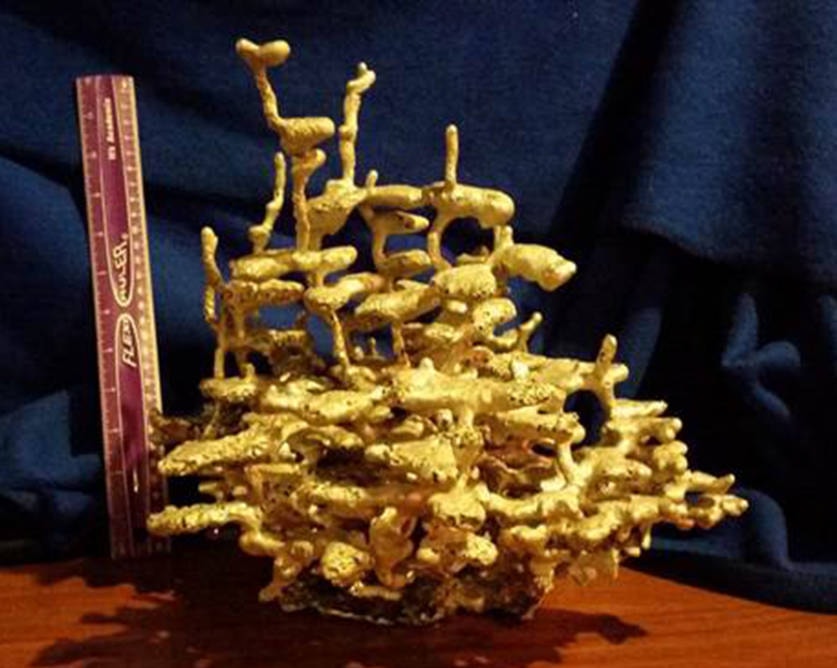By day he’s a college administrator. By night he’s melting down the aluminum in computers or in tire rims, in search of the perfect back yard foundry on his acreage.
Mark Dukeshire is a “maker” — a person who creates things, often as a hobby. He was one of the people who had a booth at the recent Red Deer Mini Maker Faire.
“What’s really funny is I’ve always been what they call a maker but I didn’t realize it. I tinker and I putter but I’ve never really considered myself an artist.”
Dukeshire has mirrored his home office completely with CDs “just because I thought it would be neat.” His garage door opener for his workshop is a winch built into the ceiling that opens the door like a drawbridge, and the door is a ramp he can drive on when it’s down.
“I do it because it’s interesting and apparently that puts me in a category of a lot of other people who do that.” His background is in science — he went to university to become a research biologist. His day job is Programs Administration Co-ordinator at Red Deer College’s Donald School of Business.
His foundry is used to melt aluminum, and from there he’s been practising making items. It’s all about trying to develop a consistent system and temperatures. Aluminum melts at about 660C. He’s reached temperatures of around 1,000C. The small foundry is insulated and not pressurized.
One day a couple of years ago Dukeshire’s son showed him a video, which led him to a website called the King of Random, showing how to make a backyard charcoal briquette foundry. “Well this is neat. I should try it.” It didn’t get hot enough so he switched to using vegetable oil for fuel.
Dukeshire said he’s been learning a lot about forms and casting and has had had some “delightful failures”. He has made some objects, such as a mace, anthill and sign, but he’s mostly been making aluminum ingots for future use.
He’s used Styrofoam shaped into objects as the mold. The liquid aluminum vaporizes the foam, which is buried in sand, and fills in to take the shape of the foam. “Imagine a liquified mirror and five minutes later you pull something out of the sand.”
At the maker fair, Dukeshire collaborated with Jason Steppler, who has a portable foundry and Facebook page called Illicit Forgeries. They offered information and displays about their foundry work.
Dukeshire is also starting to experiment with 3-D printing shapes, which could result in making anything out of metal. “Right now it’s all about what is the next thing to learn.”
barr@www.reddeeradvocate.com
